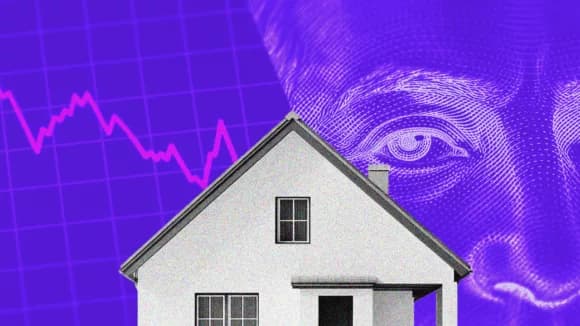And because of that you can’t compare shares and property by looking at the two indexes.
You can’t invest in the NZ Property Index. It doesn’t exist as a fund. Instead, you invest in an individual property.
But you can invest in the S&P 500 Index – a diversified basket of 500 US companies.
2) You probably have a mortgage ... and debt increases your risk
Property becomes much more risky once you add the mortgage into the mix. And that’s because of the Mortgage Magnifier effect.
Here’s a simple example:
- You buy a $500,000 house.
- You put in a $100,000 deposit.
- The market goes up 10%.
Your property is now worth $550,000. You made $50,000. And you now have $150,000 of equity in the property (up from $100k).
But that’s NOT a 10% return.
It’s a 50% return because you started with $100k of equity. Now you’ve got $150k equity in the property your equity rose by 50%.
How did that happen? The debt.
You only put in a fifth of the money, so you get 5x the market return.
The mortgage magnifies the market’s return. That’s why it’s called the Mortgage Magnifier.
But, it works the other way too.
Let’s say the market drops 10%. Your $500k property has gone from $500k to $450k.
And your equity in the property has gone from $100k down to $50k. You lost $50,000 and your equity in the property has halved.
In other words, you got a -50% return. That’s 5x the return the market received.
That’s why your wealth in a property jumps around a lot if you buy a house with a big mortgage.
So, buying a property with a 20% deposit (more debt) is riskier than buying a property with a 50% deposit (less debt).
Similarly, buying a property with a 50% deposit is riskier than buying a property with no debt.
We’re getting close to making our final comparison between property and shares, but first we need to discuss the risks of buying different shares.








